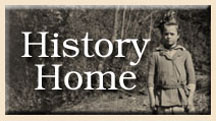

The Founding of Arrowmont
In April 1943, thirty-one years after Pi Beta Phi first took up the task of educating the people of Gatlinburg, Tennessee, the “Squires” of Sevier County voted to assume financial responsibility for primary and secondary education in the Gatlinburg school district. This move was more symbolic than substantive, for the county lacked the funds necessary to affect an immediate takeover while still maintaining the school’s state accreditation. But the decision freed the fraternity to begin planning for the future -- a future that would see it play a less prominent role in the community, if not withdraw altogether.
As it happened, the “day of reckoning” was still over twenty years away. During the interim, Pi Beta Phi gradually withdrew its support from basic academic programs such as the “Three R’s,” liberal arts, and the sciences, and instead engaged in the cultivation of a “finer type of scholastic service” at the settlement school -- namely the fine arts, physical education, a joint school/community library system, and the Arrowcraft program. It was also during this period -- in 1945 to be exact -- that Pi Beta Phi, working in conjunction with the University of Tennessee’s Department of Home Economics, launched its annual Summer Workshop in Crafts and Community Recreation. This program, also known as the Summer Crafts Workshop, provided for-credit arts and crafts classes to college students, teachers, recreational therapists, retirees, and others interested in indulging their creativity. So successful was the program that by 1965, the year Pi Beta Phi at last handed the settlement school over to Sevier County officials, it seemed only natural -- at least to those involved -- that the fraternity seek a means to continue its operation, and perhaps even convert the now-defunct settlement school into a permanent, year-round arts and crafts academy.
There was, of course, no guarantee that the fraternity at large would support such a proposal. Members were more or less evenly divided on the issue of what to do with the settlement school, with some advocating that the fraternity withdraw from Gatlinburg at once, sell off its land and other assets, and then devote its energy to “establish[ing] some entirely different philanthropy.” In the end, however, Pi Beta Phi had too much money invested in looms, workshops, land, and other infrastructure, and too much time invested in building up its reputation as a leader in the American Handicrafts movement, to simply abandon the proposed arts and crafts school without at least giving it due consideration. And so, the idea was submitted to the newly-appointed Centennial Project Development Committee during the fraternity’s 1954 National Convention -- along with thirty-four other proposals -- in the hope that it would be chosen as the fraternity’s next great philanthropic project.
Not surprisingly, given Pi Beta Phi’s longstanding involvement in the arts and crafts community, the idea of establishing an arts and crafts academy on the old settlement school campus resonated with Pi Beta Phi actives and alumnae. The project proposal survived an initial Centennial Project vote, and so was included among a list of four proposals submitted for a final consideration during the fraternity’s 1962 National Convention. Following a spirited debate, during which advocates spoke out on behalf of the arts and crafts school, an “Indian School” similar to the original settlement school, a medical research project, and a benevolent foundation, members agreed that the fraternity would be wise to remain in Gatlinburg, carrying on with its decades-old mission of promoting arts and crafts literacy and handicrafts preservation. Also, the fraternity would continue operating Arrowcraft, lest Gatlinburg artisans, many of whom depended on the program as an important source of income, suffer a significant decrease in their standard of living.
| <<< Back |
 |
|